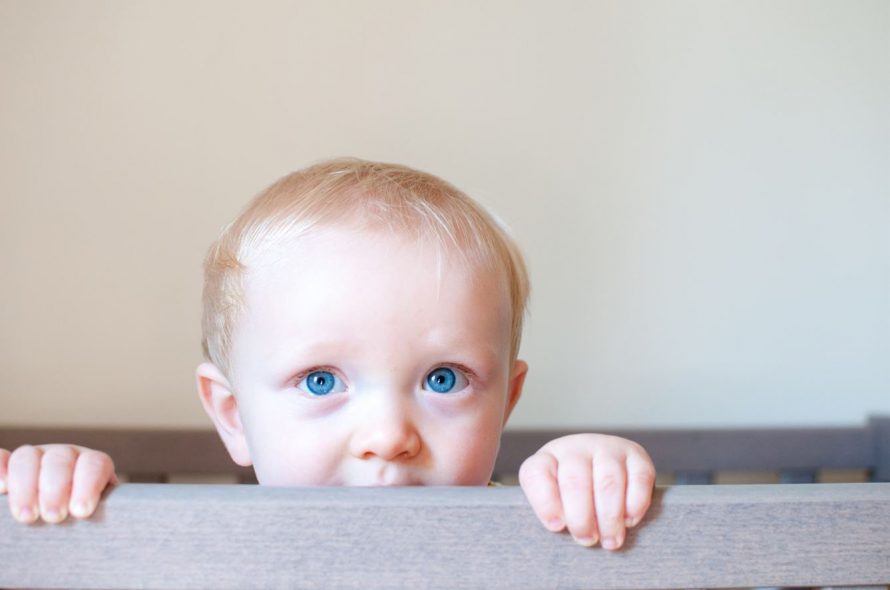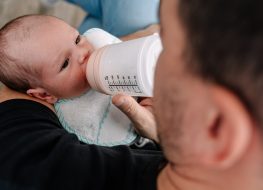
Seeing your child grow from an infant to a toddler can evoke a feeling of excitement and concern. On the one hand, you’re excited about all the changes and developments happening to your little one. On the other, these changes can be scary. Every change your child experiences brings you to new territories, both pleasant and unpleasant.
The changes we’re scared of are often the ones we cannot see or control. Sleeping behaviors are at the top of that list because we know, to some degree, that sleeping habits can pose a threat to the safety of our children. This article is meant to address these behavioral changes and let you get a handle on them, even when they’re something out of your control.
Risky Sleeping Behaviors of Toddlers
If your child is between 12–24 months, you’ll notice their sleeping behaviors beginning to change. Perhaps you’re noticing your child is staying awake when you expect him to sleep, or that they’re taking shorter naps during the day. These are only a couple of sleeping behaviors that your child exhibits during their transition from an infant to a toddler. Yet, there are some behaviors that won’t be immediately obvious to you. These sleeping behaviors are those prevalent during sleep, putting your child’s safety at risk.
Moving Around When Sleeping
At this stage of development, your toddler is likely to move around a lot while they’re sleeping. For example, they might kick off the covers or even flip over on their stomachs while sleeping. Worse, they can roll off the bed and fall. Moving around may not seem like too much of an issue, but it can cause risks if left unsupervised. Knowing the reasons why toddlers move during sleep will help you manage it. Here are the likely reasons your child is moving a lot:
- A change in room temperature. It may be too hot or too cold, enough for your baby’s body to feel uncomfortable.
- Noise can pull your toddler out of deep sleep. When they’re half-awake, they tend to toss and turn on their toddler bed to find the sweet spot that will help them fall into dreamland. But what they don’t realize is that as long as the noise is there, they’ll stay in sleep purgatory.
- Restless leg syndrome is another factor that makes your child move a lot while sleeping. This syndrome is an uncontrollable urge to move the leg, which is caused by a buildup of energy in the child. When this happens, it can result in the toddler getting up because of restlessness.
- Nightmares can interrupt a toddler’s sleep. Nightmares can sometimes prompt your toddler to wake up as his mind and body’s way of reacting to the nightmare. What’s worse about nightmares is that the fear of dreaming makes it difficult for a child to go back to sleep.
- A full bladder can cause sleep interruption and can result in your child moving around a lot while in bed or getting up and out of it.
Sleep Regression
Sleep regression is a behavior that is common in children who are between 12–24 months. It’s the time when they’ll start showing signs of entering toddlerhood, and this shows in their sleeping pattern, too. Your child might suddenly refuse naps, or they will wake up earlier than usual because sleep is not continuous throughout the day anymore.
These sleeping behaviors put toddlers at risk because they enable them to move around when they’re expected to sleep. It isn’t likely for anyone to stay up all night and watch their every move to make sure they are safe.
As a parent, you can identify the risks that can result from these behaviors so you can take measures to minimize and even eliminate them during your waking hours.

Risks Associated With Toddler Sleep Time
A moving toddler entails risks, and this is multiplied during sleep time. Luckily, we have identified the behaviors that can compromise your child’s safety. While it’s important for a parent to understand how and why these behaviors manifest, it’s also equally important to identify the consequences. Here are some of them:
Falling Off the Bed
Falling off a bed is the leading cause of injuries among toddlers. This happens when a child sleeps in a small kid’s bed or a twin bed that’s too high. When a child moves around on a small platform bed at night, they can’t estimate the boundaries of the bed frame. As a result, they fall off of it hard. This fall is made worse by a tall bed. The higher the bed rises, the harder the fall is. Injuries from falling off a bed can cause fractures, hematoma, and head injuries.
Tripping on the Floor
If your child makes it to the floor flat on their feet, he isn’t out of the woods yet. For a toddler still in the process of becoming proficient in walking, the floor can be a trip hazard. A slippery floor or an uneven surface may cause a toddler to lose their balance and fall. Objects on the floor may also cause trip hazards that will send your toddler to the ground. Just like injuries from falling, toddlers can injure themselves in the form of fractures, bruises, or head trauma.
Bumping on Edges
If your child manages to stay on his bed, they are still prone to another risk—bumping their head on the bed frame. If your child’s bed is made of hard corners and if they try to move or even jump on the bed, they might trip and hit their head on one of the corners. This isn’t exclusive to bed corners either. Your toddler can also bump on the sharp edges of furniture around the bedroom if they manage to get out of bed and move around in the dark.
Plenty of risks surround our toddlers. That’s why it concerns parents when they leave them at night, even if they’re in a deep sleep. A lot can happen behind our backs. But there’s a way for us to keep our child safe when our guards are down.
Keep Your Child Safe
A combination of awareness and knowledge can help parents manage risks associated with toddlers’ sleep time. The good news is that there are things that can be done during the day that can serve parents and toddlers when sleep time comes. Here are some of them:
- Remove trip hazards on the floor such as slippery rugs, toys, other objects. Maintain a dry and clutter-free floor.
- If you can adjust the height of the bed frame to the lowest, do so. Otherwise, buy a kid bed that is designed to minimize fall and bump risks.
- Cover up the bed with thick mattresses and put a foam bumper on the edges. As for furniture edges, a thick and soft foam will do the trick. This will serve as a cushion for your toddler’s head and will bounce them back from the bump, free from injuries.
- Before bedtime, put pillows or thick rugs on the floor beside the bed to serve as a cushion in case of a fall. Do this no matter how high the bed is.
- Most importantly, get bed rails for your young ones to prevent them from leaving their bed at night.

Bedside Rails For Toddlers: A Risk Prevention Tool That Gives You Peace of Mind
If you want to prevent risks, get double-sided bed rails for toddlers and install them on the beds. There are large and portable bed rails for toddlers that can fit the size of their beds to ensure that every corner is covered.
These bedside rails serve as a preventive tool that keeps your toddler on the bed’s surface. The height of these rails are designed to keep your toddler from jumping over and ensure that your child is safe and secure when he wakes up and moves during the night.
On the other hand, bedside rails for toddlers with full bed metal railings provide a firmer preventive measure. Think of it as a convertible crib for toddlers. The metal safety rail serves as support for your toddler to hold on to if they want to stand up and move along the railings.
Bed rails virtually eliminate all the risks you’re concerned about. In addition, it gives you the peace of mind you need whether you’re watching your toddler or not.



